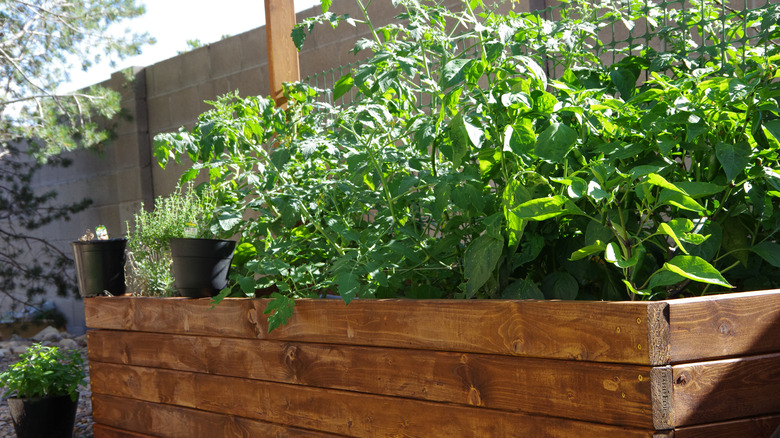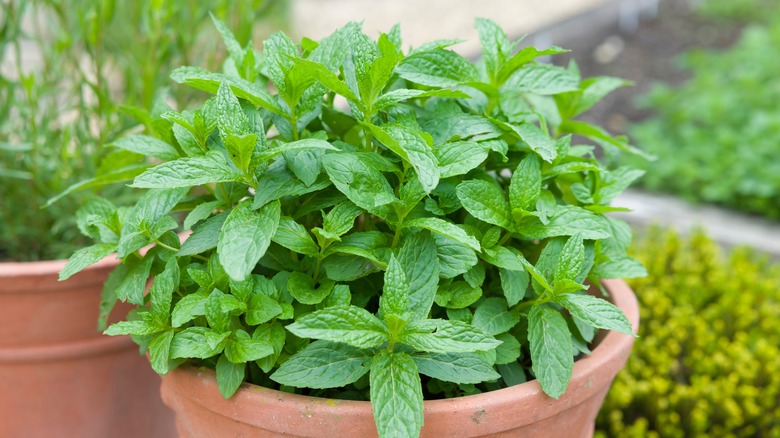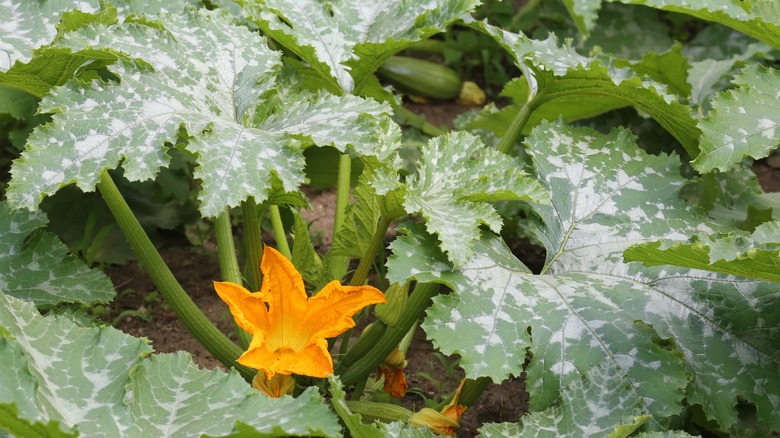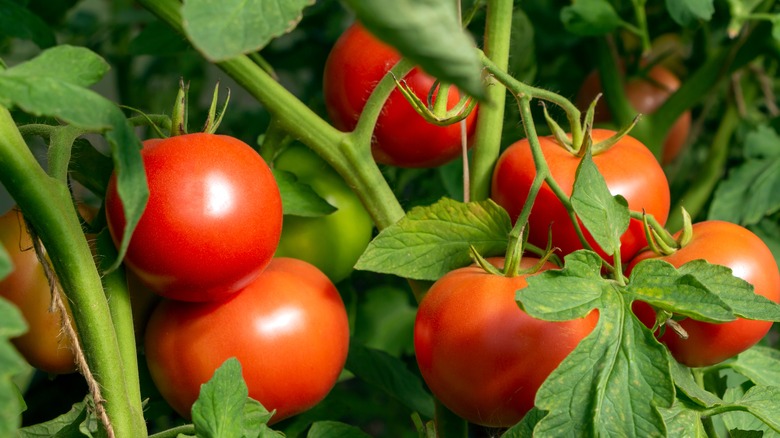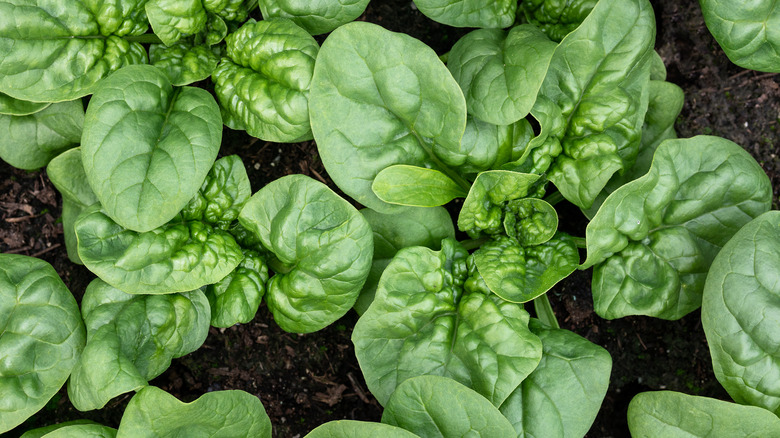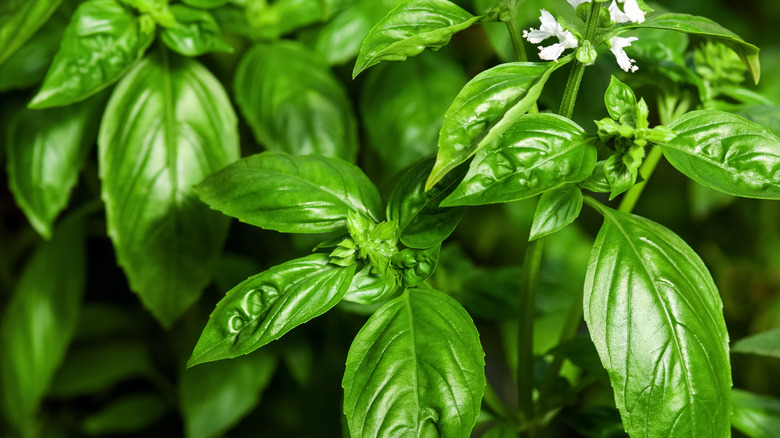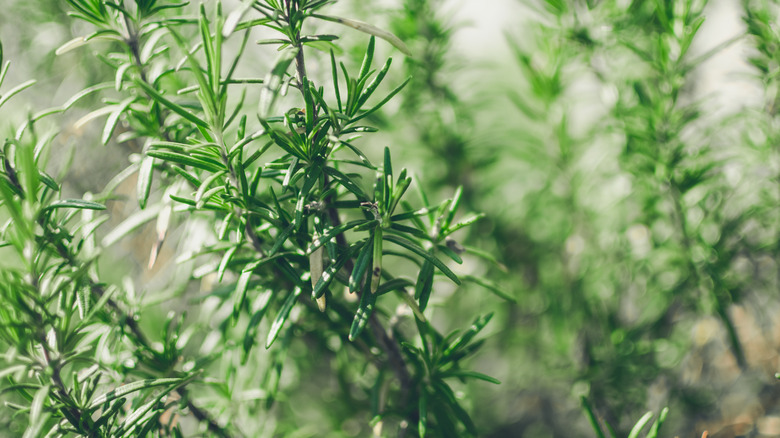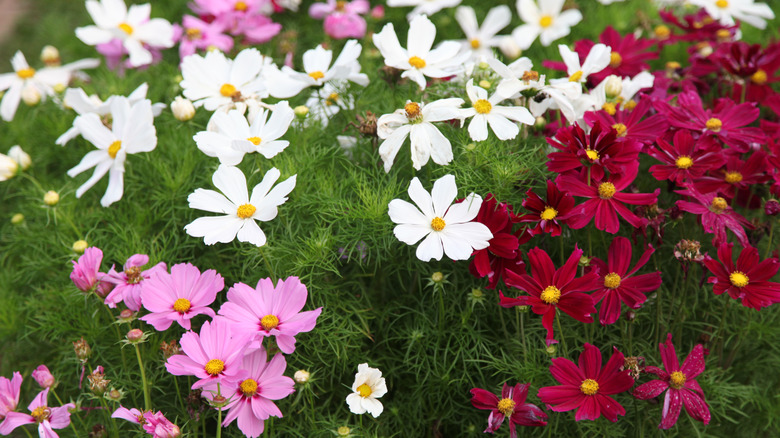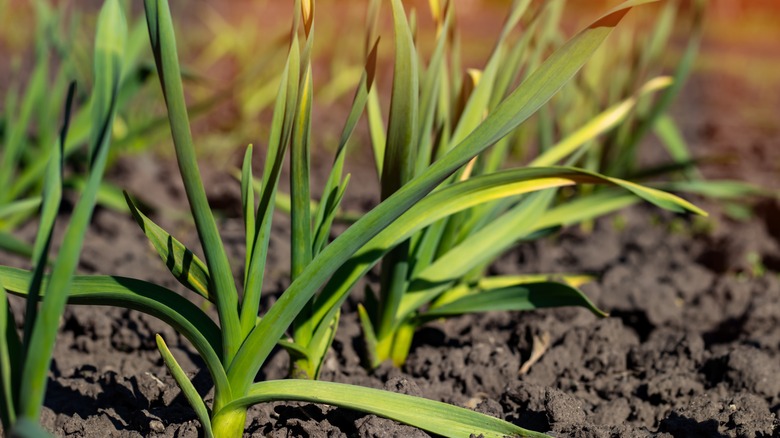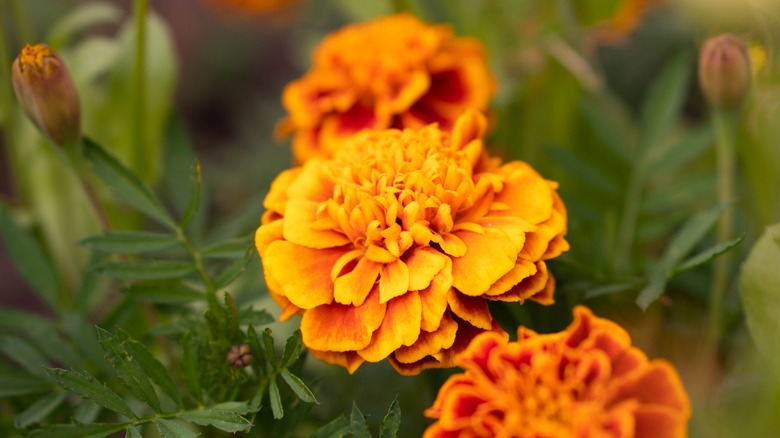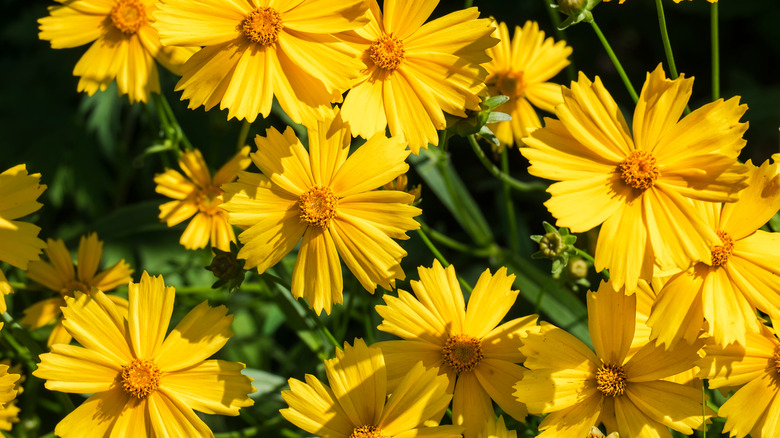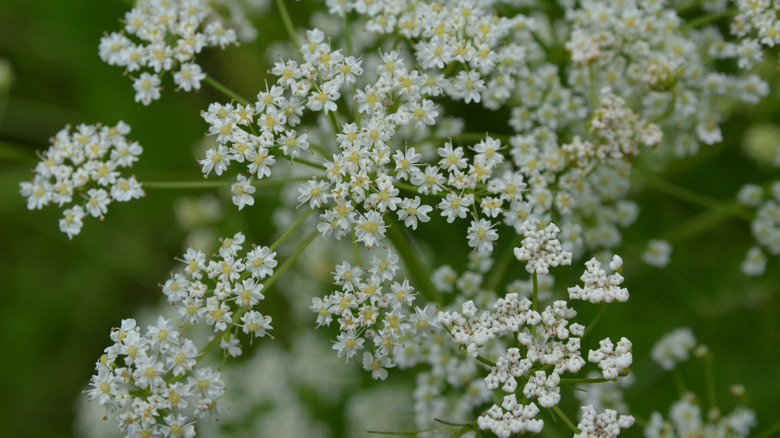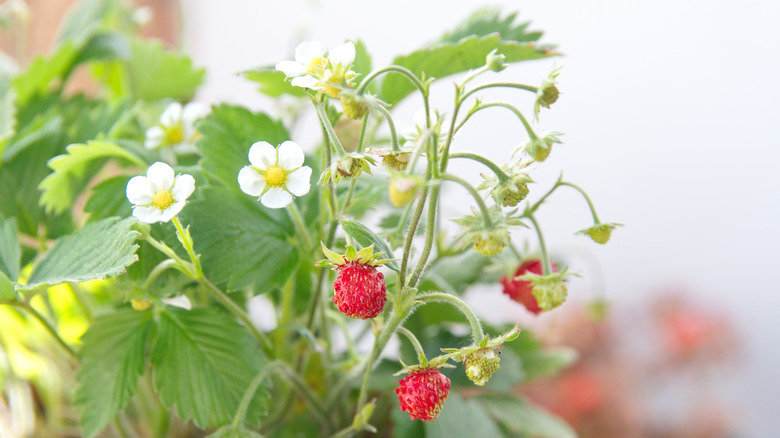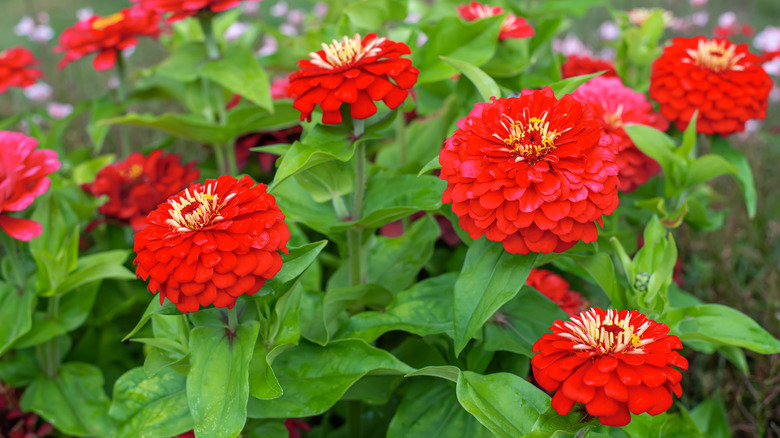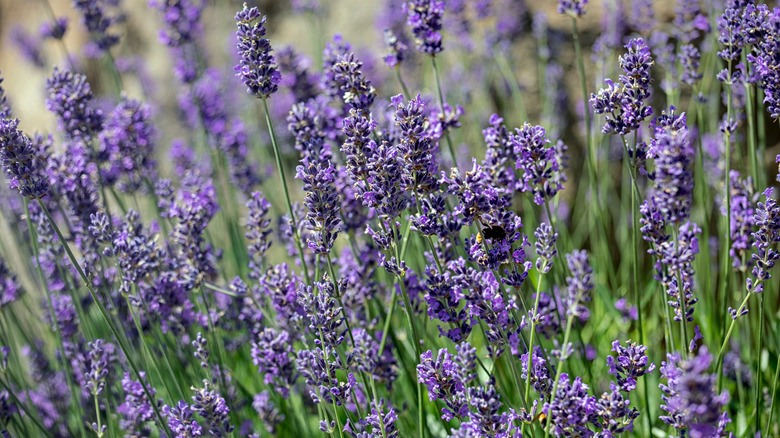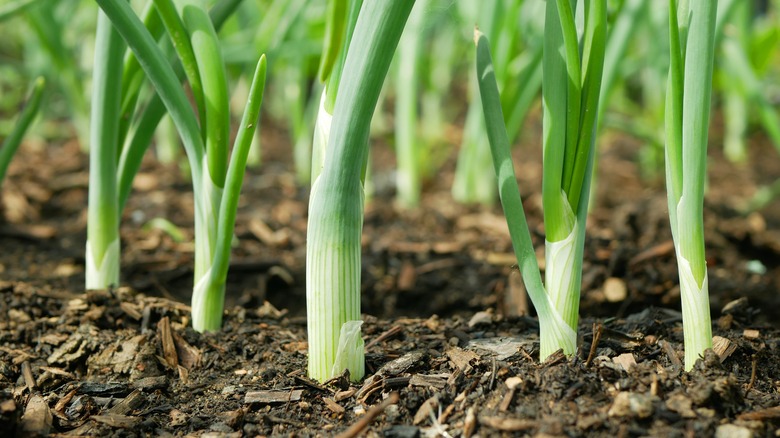15 Hearty Plants Perfect For Raised Planter Boxes
If you own raised planter boxes, you already know about all the benefits that they provide. These benefits include maximizing your gardening capacity, making weeding easier, and controlling the quality of your soil. Additionally, if you live in an area without a yard or garden, you can raise just about any flower, vegetable, fruit, or herb that you set your heart on. Of course, this is assuming your region supports its sunlight and temperature needs. Take a look at your favorite plants' growing requirements before planting them outdoors, so you don't have to feel the frustration of losing warm weather plants like tomatoes, rosemary, and garlic to temperature drops.
Several of the plants in this collection do well together in raised planter boxes as companion plantings. As suggested by the University of Minnesota Extension, you can plant basil, marigolds, and tomatoes together to ward off pests and promote growth. Here are the best herbs, flowers, fruit, and vegetable plants that will thrive in your raised beds.
Mint Plant
Mint plants (mentha spp.) are aggressively growing herbaceous perennials that are extremely cold-hardy, as mentioned by Utah State University. They do well in raised planter boxes filled with slightly acidic soil that is also moist and rich in organic matter. Be careful planting mint with other, weaker garden plants as they may overpower them.
Bloom Season: Summer to fall
USDA Growing Zone: 3 to 8
Growing Conditions: Full sun to partial shade
Soil Type: Moist, rich, and slightly organic
Size: Up to 3 feet tall
Patty Pans
Patty pans (cucurbita pepo), also known as acorn squash, field pumpkins, or squash, are rapidly growing, warm-season vegetable plants that produce multi-colored fruit. This plant enjoys moist soil and plenty of direct sunlight, as told by North Carolina State Extension.
Bloom Season: Summer
USDA Growing Zone: 3 to 11
Growing Conditions: Full sun
Soil Type: Well-drained loam with high organic matter
Size: 1 to 2 feet tall and 2 to 3 feet wide
Tomato
Tomatoes (solanum lycopersicum) are a species of herbaceous perennials that are grown in average garden soil throughout the summer months in most regions. As stated by Missouri Botanical Garden, the tomato plant does well in containers, planter boxes, and garden beds with other vegetable plants.
Bloom Season: Summer
USDA Growing Zone: 10 to 11
Growing Conditions: Full sun
Soil Type: Well-drained garden soil
Size: 3 to 6 feet tall and 2 to 3 feet wide
Spinach
Spinach plants (spinacia oleracea) are native to southwest Asia, but now they are grown all over the world. There are many different varieties of spinach in the oleracea species, some have smooth leaves while others have tastier wrinkled leaves, according to the University of Wisconsin-Madison. Both types can be grown in raised planter beds during the spring and summer.
Bloom Season: Summer
USDA Growing Zone: 1 to 11
Growing Conditions: Full sun to partial shade
Soil Type: Well-drained and rich in organic matter
Size: 6 inches to 1-foot tall and wide
Basil
The basil plant (ocimum basilicum) is a popular herb that can be grown indoors as a houseplant or outdoors in herb gardens or containers. Depending on the cultivar, basil plants can grow quite tall and bushy, but they are easily made compact by taking cuttings frequently. As pointed out by Missouri Botanical Garden, the plant also grows small flowers if it's left to bloom.
Bloom Season: Summer to Fall
USDA Growing Zone: 2 to 11
Growing Conditions: Full sun
Soil Type: Rich and well-drained
Size: Up to 2 feet tall and wide
Rosemary
Rosemary (salvia rosmarinus) is a tall growing, bushy plant that is a part of the lamiaceae family that also hosts lavender, catnip, and sage. This shrub should be planted in a bed with poor, well-drained soil that receives full sunlight, as explained by RHS.
Bloom Season: Spring and summer
USDA Growing Zone: 8 to 10
Growing Conditions: Full sun
Soil Type: Well-drained chalk, loam, clay, or sand
Size: Up to 8 feet tall and wide
Cosmos
If you are looking to fill a raised planter box with flowers, cosmos (cosmos spp.) is a great option. These classic flowers come in a variety of shades so your planter will be bursting with color by mid-summer. Utah State University warns that cosmos can self-seed very vigorously and become weedy. To prevent this you should deadhead spent flowers.
Bloom Season: Summer to fall
USDA Growing Zone: 2 to 11
Growing Conditions: Full sun
Soil Type: Well-drained loam, sand, or chalk
Size: Up to 5 feet tall
Garlic
For thousands of years, garlic (allium sativum) has been cultivated for use in the culinary and medical fields, explains the University of Wisconsin-Madison. Garlic plants can be difficult to grow, but the herb you are left with is reward enough for many people. Be warned — they require quite a bit of water, heavy applications of fertilizer, and frequent removal of weeds nearby.
Bloom Season: Spring
USDA Growing Zone: 7 to 10
Growing Conditions: Full sun
Soil Type: Well-drained and high in organic matter
Size: Up to 3 feet tall
Marigolds
Marigolds (tagetes spp.) are best described as cheery, long-blooming flowers that are easily grown. As pointed out by Clemson Cooperative Extension, these blooming annuals can be planted in containers, in the garden, or as a mass planting. They are sure to look great in your raised garden bed among other flowers, herbs, or vegetables.
Bloom Season: Summer
USDA Growing Zone: 2 to 11 as annuals
Growing Conditions: Full sun
Soil Type: Well-drained and loamy
Size: 6 inches to 3 feet tall
Coreopsis
Coreopsis (coreopsis spp.) is a cold hardy flower known for its ability to attract butterflies and ward off rabbits and deer. They are also tolerant of dry and poor soil, as per Costa Farms, so they can be planted with rosemary and lavender plants.
Bloom Season: Spring and early summer
USDA Growing Zone: 4 to 9
Growing Conditions: Full sun
Soil Type: Rich and well-drained
Size: 6 inches dwarf varieties to 2 feet tall
Caraway
Caraway (carum carvi) is a biennial herb that produces edible fruit, flowers, and roots. Southern Seed Exchange says their fruit, which are called seeds, flavors popular foods such as rye bread, British seed cake, some soups, and sausages. Caraway is best planted in a raised planter box as a companion plant to strawberries that benefit from the herb's ability to attract parasitic wasps and flies, according to Kellogg Garden Products.
Bloom Season: Spring and summer
USDA Growing Zone: 4 to 10
Growing Conditions: Full sun to partial shade
Soil Type: Rich and well-drained
Size: 1 to 4 feet tall
Strawberries
Strawberry plants (fragaria x ananassa), which unfortunately have many problems with pests and disease, are known for their dainty white flowers that present sweet, red fruit in the summer. As described by North Carolina State Extension, the strawberry plant does well in raised beds that are supplied with water frequently.
Bloom Season: Spring
USDA Growing Zone: 5 to 9
Growing Conditions: Full sun to partial shade
Soil Type: Well-drained, moist clay or loam
Size: 6 inches to 1-foot tall
Zinnias
Zinnias (zinnia spp.) are a great choice for planting in raised garden beds because they easily attract pollinators that are necessary for vegetable plants to do well during the harvest season. Penn State Extension suggests planting zinnias between or around rows of vegetables where they can flower from summer until the first frost in the fall or winter.
Bloom Season: Summer
USDA Growing Zone: 9 to 11
Growing Conditions: Full sun
Soil Type: Well-drained
Size: 6 inches to 3 feet tall
Lavender
Lavender plants (lavandula angustifolia) have a wide range of uses, as taught by Missouri Botanical Garden. They can be harvested to flavor teas, scent lotions, or perfume an entire room from a sachet. Alternatively, you can let them flower all summer long in your raised planter boxes, so they can make your garden smell like a calm escape.
Bloom Season: Summer
USDA Growing Zone: 5 to 8
Growing Conditions: Full sun
Soil Type: Well-drained and alkaline
Size: 3 feet tall and 4 feet wide
Shallots
Shallots (allium cepa) are a variation of the common onion that are known to be smaller as well as sweeter and sharper in taste. North Carolina State Extension explains that the shallot is described as the flavor between onion and garlic. Before planting, remember that this vegetable prefers loose, moist soil that receives full sun.
Bloom Season: Summer
USDA Growing Zone: 5 to 10
Growing Conditions: Full sun
Soil Type: Well-drained loam, sand, or organic matter
Size: Up to 30 inches tall and 1-foot wide
